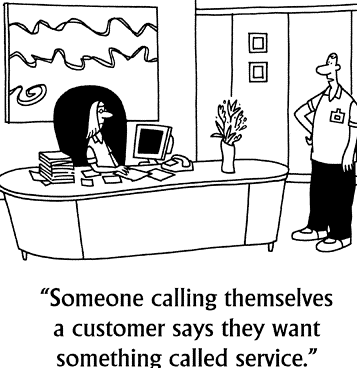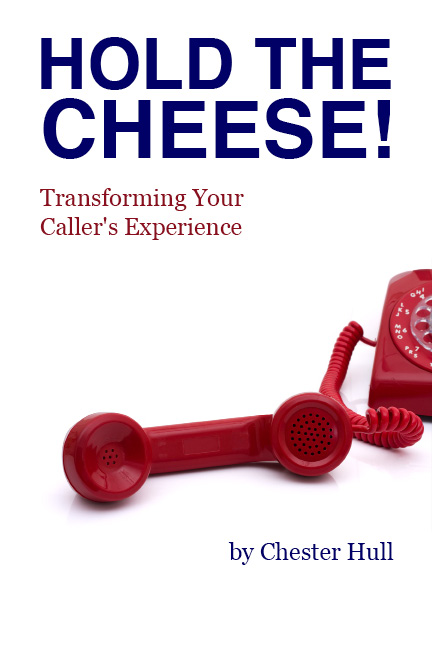 Have you ever wondered who thought of writing the Auto-Attendant you are listening to when you call a company?
Have you ever wondered who thought of writing the Auto-Attendant you are listening to when you call a company?
How many times have you been frustrated by the options?
How often have you thought “they sure weren’t thinking of me when they designed this thing?”
One of the things that has always puzzled me is the fact that there seems to be an unspoken rule that Auto-Attendant messages have to be frustrating! I mean, that’s the majority of experiences out there, right?
Well guess what…we’ve done the research, and there is no such rule. Not a one!
In fact, just the opposite. The same rules that apply to good writing, also apply to crafting a good Auto-Attendant, and giving your callers a great Caller Experience.
Recently Melanie Polkosky wrote an article where she applies the top 10 rules of good writing to Auto-Attendant scripting.
Today I’m starting a series covering each of these rules in detail. But first let’s see what Melanie has to say:
1. Never open with platitudes: It only signals antagonism for the listener to utter something as trite as, Please listen carefully as our options have changed. The listener is more apt to roll his eyes in exasperation and stop listening altogether. It creates atmosphere for your interaction, no more positive than a book that begins, “It was a dark and stormy night.”
Have you ever been calling a company for years, and heard this same message for years? Of course you have! But it’s rather insulting to your caller. As if they WEREN’T listening carefully? “Listen carefully” as opposed to just doodling while I am talking?
It’s ok to change the options. But do you think callers really have memorized your phone tree options?
You might say “but our callers are power users. They know exactly what they want, and jump to that option without hearing the message.”
But think about it for a minute. Your power users aren’t going to listen to it because they’re going to just jump ahead like they always do. And if they do get to the wrong menu, they know how to back up (you do have the “*” key as your universal “Go Back” key, right?), and they’ll listen to the menu.
But the callers who are not power users don’t need to know that the menu has changed!
Just leave it off the greeting, and you’ll have a more simple, brief, and pleasing main greeting!
 There are times when your Auto-Attendant or Integrated Voice Response (IVR) system simply isn’t going to provide what your caller wants.
There are times when your Auto-Attendant or Integrated Voice Response (IVR) system simply isn’t going to provide what your caller wants. This post is guaranteed to be legalese-free!
This post is guaranteed to be legalese-free! Using technical jargon is one of the easiest ways for a business to get tripped up in any of their marking or customer communications. Technical jargon…insider lingo…industry acronyms…it all comes from what I call “The Curse of Knowledge”.
Using technical jargon is one of the easiest ways for a business to get tripped up in any of their marking or customer communications. Technical jargon…insider lingo…industry acronyms…it all comes from what I call “The Curse of Knowledge”. In order to read this blog post, please choose from the following options:
In order to read this blog post, please choose from the following options: One of the first things to look at in an Auto-Attendant design is eliminating branches. The more branches there have to be, the more likely you will be frustrating your caller.
One of the first things to look at in an Auto-Attendant design is eliminating branches. The more branches there have to be, the more likely you will be frustrating your caller. When it comes to writing for Aut0-Attendants, there’s a lot that can be learned from rules of writing in general. Rules of good writing shouldn’t be simply thrown out the door just because the application is to fit inside the constrains of a phone system.
When it comes to writing for Aut0-Attendants, there’s a lot that can be learned from rules of writing in general. Rules of good writing shouldn’t be simply thrown out the door just because the application is to fit inside the constrains of a phone system. Guiding or ordering? Which one are you doing in your Auto-Attendant? People want to be drawn in, not ordered around. After all, the reason you have an Auto-Attendant is to give your callers options…which by very definition means they are free to choose what they would like.
Guiding or ordering? Which one are you doing in your Auto-Attendant? People want to be drawn in, not ordered around. After all, the reason you have an Auto-Attendant is to give your callers options…which by very definition means they are free to choose what they would like. What’s more confusing…a poorly designed Auto-Attendant that leaves you to flounder around all by yourself, or one that is so poorly designed that the creator chooses to put roadsigns and instructions for how to navigate?
What’s more confusing…a poorly designed Auto-Attendant that leaves you to flounder around all by yourself, or one that is so poorly designed that the creator chooses to put roadsigns and instructions for how to navigate? Have you ever wondered who thought of writing the Auto-Attendant you are listening to when you call a company?
Have you ever wondered who thought of writing the Auto-Attendant you are listening to when you call a company? I started to call this blog post “Great Customer Service doesn’t just happen face-t0-face.” And while that’s true, it really doesn’t “just happen“.
I started to call this blog post “Great Customer Service doesn’t just happen face-t0-face.” And while that’s true, it really doesn’t “just happen“. Facebook
Facebook LinkedIn
LinkedIn Twitter
Twitter



